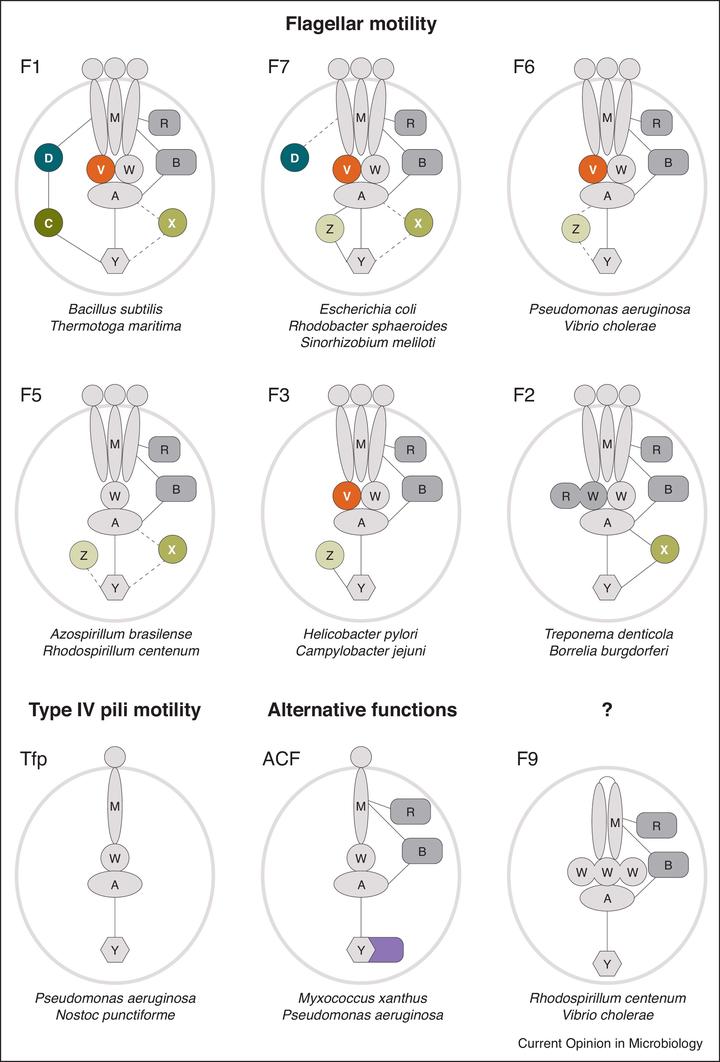Diversity of bacterial chemosensory systems

Abstract
Chemosensory system is the most complex, specialized mode of signal transduction in bacteria and archaea. It is composed of several core and auxiliary protein components that are highly organized in order to deliver a fast response to changing environmental conditions. Chemosensory pathways were studied in-depth in a handful of model organisms and experimentally characterized at least to some degree in approximately thirty other species. However, genome-wide analyses have revealed their presence in thousands of sequenced microbial genomes. Both experimental and computational studies uncovered substantial diversity in system design, functional regulation, cellular localization and phyletic distribution of chemosensory pathways. Here, we summarize advances and expose gaps in our current understanding of the diversity of chemosensory systems.